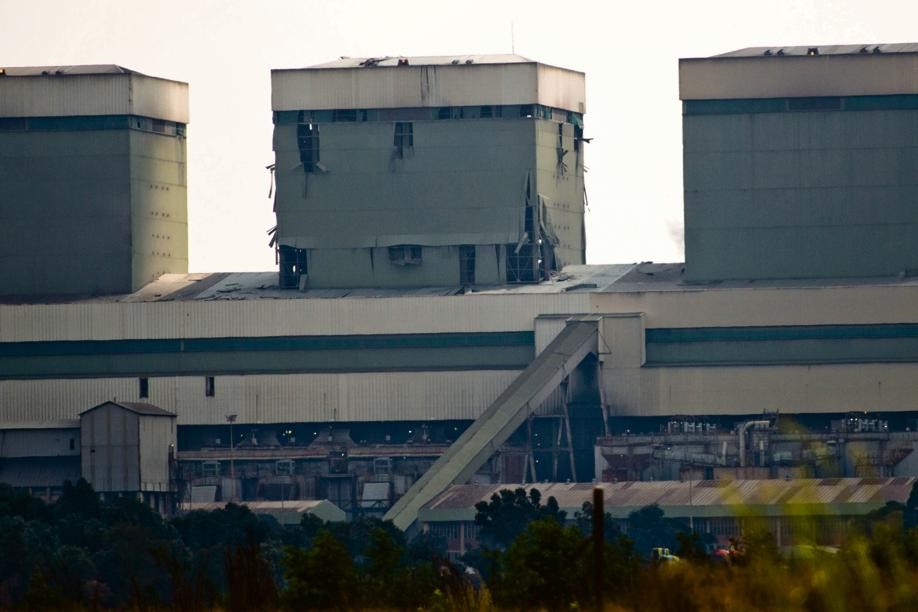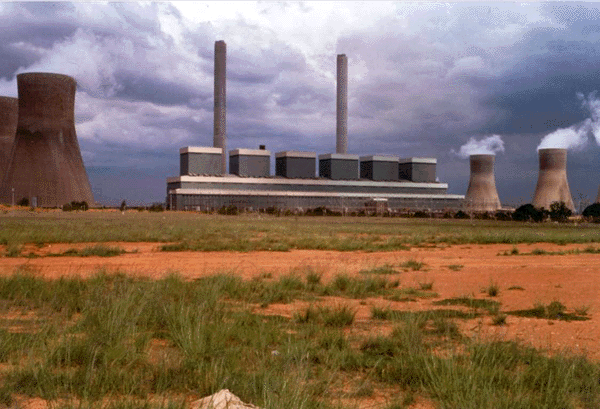This loss occurred in a Power Plant in Africa, the Insured was wholly owned and operated by the Government. The Insured owned a Captive Insurance company, which was re-insured locally and internationally. Business Interruption was not insured.
The power company was recently under heavy criticism due to electricity power shortages, and this loss made their situation and the criticism worse. There was therefore high political interest in the successful completion of the reinstatement and management of the loss. Robertson and Co were well known to the Insured (from other unrelated prior losses), the Insured recognized and valued the input we provide as well as the value added from our technical approach. They were therefore able to satisfy the government that a proper plan and process were in place to manage the loss to completion.
The loss happened in 2014, in a 3600MW total capacity power plant. The plant itself was coal fired, remotely located, and was considered as being of national importance as it provided base power for the country. The plant had 6 full trains (boiler -> turbine -> generator) and was over 32 years old at the time of the incident. A significant explosion occurred in the boiler to one of the trains of the power plant. Operation and maintenance was done by companies wholly owned by the Insured.

On arrival at site, we met with the Insured to attempt to understand the facts known and to set up the initial steps required for successful management of the loss.
We immediately set up the first two steps in the Loss Management Plan methodology; the Agreed Scope of Damage and the Common Cause Report. It is important to understand that these two activities happen in parallel.
Agreed Scope of Damage
We employed a team of engineers based locally with experience in our methodology therefore reducing onboarding time. The team were able able to mobilize within a few days, the Insured had sufficient engineers on staff to work alongside our engineers to prepare the scope of damage. Specialist engineers from each of the following disciplines were deployed: mechanical, piping, instrumentation, civils/structural, and electrical.
One of the immediately apparent difficulties was the lack of up to date engineering drawings and detailed asset registers, fortunately the boilers left and right of the damaged one were identical and therefore whenever the engineers struggled to identify any items they were able to refer to the adjacent boilers. The Insured and Insurers engineers systematically agreed and prepared a full scope of damage detailing all the items that were damaged by the explosion.
As the scope of damage activities progress it became clear that the boiler was damaged beyond repair and would need to be replaced.
Common Cause Report
Having been through our process a couple of times before, the Insured had already called to site their best specialized engineers to participate in the investigation of the cause of loss. The Common Cause investigation starts with the appointment of a Common Cause Committee whose job is to steer the investigation and manage the multitude of specialist engineers employed to participate in the investigation.
Insurers (through us) employed an explosion dynamics specialist firm based in the US and an engineer from a well known German power plant specialist to participate in the investigation. Representatives from the company that built the original boiler were also asked to participate however they were not invited to participate in the Common Cause Committee due to possible conflicts of interest.
After several months of investigation (witness statements, instrumentation analysis, process reviews, metallurgical testing and multiple hypotheses) the cause of loss was finally identified. This was undisputed with the Insured and was an Insured peril.
The Insured, being a public company, was obliged to go through a public tender process for the reinstatement works, despite the significant losses in revenue the Insured were incurring (BI was not Insured).
Once the agreed scope of damage was completed it formed the basis for the tender documents that would be submitted to interested contractors. Since it became clear that the boiler could not be repaired and had to be replaced, we requested that two bids be prepared. These were termed ODP 1 and ODP 2 (ODP = Original Design Profile). ODP 1 was reinstatement to the exact same design profile that existed immediately prior to the loss, ie. the reconstruction of a 32 year old design. ODP 2 was the construction of a new modern boiler to the same specifications as existed prior to the loss in terms of capacity/temperature etc.
The bid packages for both design profiles were submitted to 7 contractors. Of those 7, 2 declined to submit bids, 5 returned bids, 2 of which were significantly overstated. This left 3 bids worthy of serious consideration. All of the bids returned showed that ODP2 was the more economic option, these of course also presented advantages in terms of operating efficiencies to the Insured. One of the contractors submitted a bid using a completely new modular construction design that uses significantly less pipework than a traditional Bensen style boiler. This reduction in pipework reduced material costs (a large part of the boiler is piping), reduced delivery time, and reduced construction time due to there being fewer on site welding requirements.
After careful consideration and analysis of the best 3 bids, Insurers opted for the new design as being their favorite. The Insured however preferred a design that was based on ODP 1, their concern being how to operate a new boiler (changes to operating systems, staff training, procedures and spares). Insurers felt that the savings the Insured would gain on operating efficiencies and the time saved (close to 12 months shorter) on the reinstatement period would far outweigh any extra costs for training and holding new spares.
With the change in design, and the Insured preferring a different design, it would be impossible to reconcile any actual costs with the projected costs. Insurers therefore capped their exposure to the winning ODP 2 bid as this would be a legitimate reinstatement option which the Insured recognized. However, the Insured wanted to have a free hand to select their preferred contractor and design profile and therefore serious consideration to a cash settlement was given. Eventually a cash settlement was agreed taking into consideration the length of the reinstatement and the early payment of the loss.
With the differences in opinion crystallizing so early in the loss, there was no unnecessary spend by the Insured and therefore no disputes. The Insured was able to budget their work based on Insurers ODP2 bid, and obtain funding from the government for the difference.

